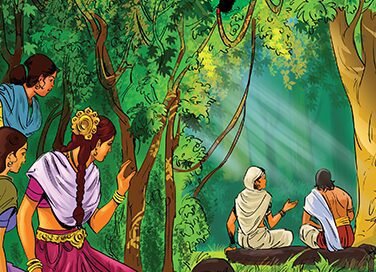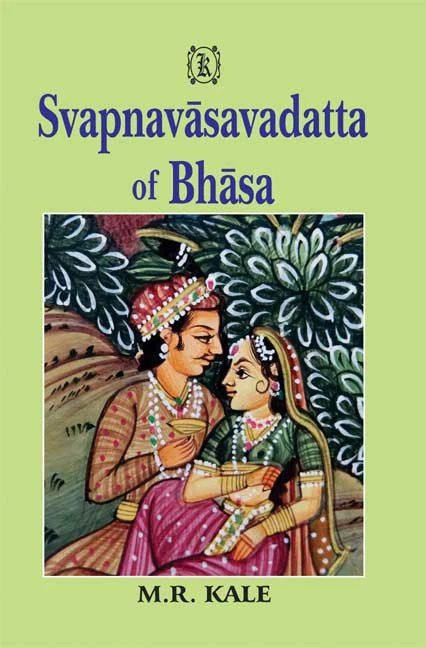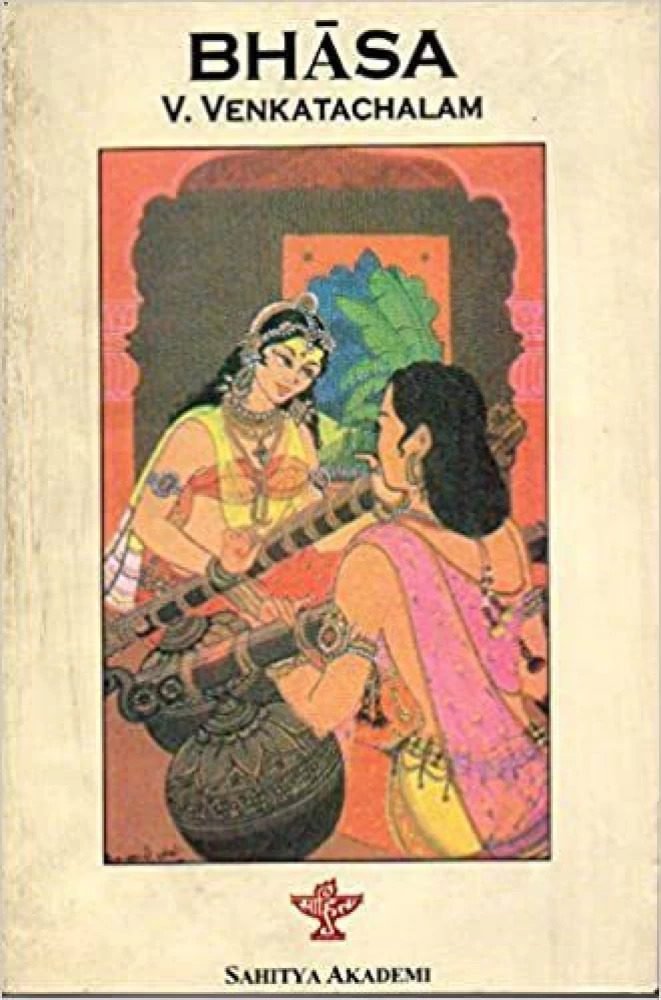Unveiling Bhasa: Exploring Classical Indian Theatre

Bhāsa, who lived during the 3rd century AD in India, stands as the earliest known Sanskrit playwright. Bhāsa emerged as a prominent figure in the early history of Indian playwrights who composed their works in Sanskrit, predating the renowned Kālidasa. The name of Bhāsa had already achieved recognition by the 1st century BCE, and his literary contributions are associated with the late-Mauryan period, dating back to the earliest time frame of 322-184 BCE. However, the compilation of thirteen plays attributed to him is commonly ascribed to a period closer to the 1st or 2nd century CE.

For many centuries, the dramatic works of Bhāsa had remained elusive, with no extant copies to reference. It was not until 1913 that these manuscripts were fortuitously rediscovered, thanks to the diligent efforts of the Indian scholar Ganapati Shastri. Prior to this rediscovery, Bhāsa’s existence and legacy had been preserved solely through references in other literary works, such as the Kavyamimamsa, a treatise on poetics composed between 880 and 920 AD. Notably, in the Kavyamimamsa, Rajashekhara attributes the play Swapnavāsavadattam to Bhāsa.

Among his notable contributions is the play Svapnavāsavadattā (“The Dream of Vāsavadattā”), which portrays the narrative of a king losing and subsequently reclaiming his kingdom from a usurper. A common thread in many of his dramas is the artful adaptation of heroic and romantic themes drawn from India’s two monumental epics, the Rāmāyaṇa and the Mahābhārata.
Bhāsa’s dramatic works diverged from the established dramaturgy of his era, notably in his inclusion of battle scenes and depictions of violence on the stage. His influence on later playwrights is evident in the works of the renowned 5th-century dramatist Kālidāsa, who consciously emulated and enhanced some of Bhāsa’s literary motifs.

The Origins and Legacy of Bhasa: Tracing the Early Roots of Indian Dramatic Literature
The precise birthdate of Bhāsa remains uncertain, though historical records already acknowledged his renown as a prominent dramatist by the 1st century BCE. He can be situated within a time frame ranging from the late Mauryan period at the earliest to the fourth century CE at the latest. It is noteworthy that Bhāsa’s linguistic style aligns more closely with that of Kālidāsa, who lived in the 5th century CE, rather than with Aśvaghoṣa, whose prominence is dated to the 1st-2nd century CE.
Bhāsa’s dramatic works deviate from certain principles outlined in the Nātya Shastra. These deviations have been interpreted as evidence of their antiquity, as no post-Kālidāsa play has been found to violate the rules prescribed by the Nātya Shastra. Notably, scenes in Bhāsa’s plays depict instances of physical violence on the stage, as exemplified in works like Urubhangam. Such depictions directly contravene the strict guidelines set forth by the Nātya Shastra. However, it is essential to emphasize that these observations, on their own, do not conclusively establish a chronological framework. Indu Shekhar, for instance, points out that, “Regardless of the exact date of the Nātya Shastra, it is significant that no direct reference to it surfaced before the seventh century.” It was during this period that the Nātya Shastra gained recognition and attention from numerous poets, writers, and theorists.

The Rediscovery and Preservation of Bhasa’s Playwright Legacy
In 1912, Mahamahopadhyaya T. Ganapati Sastri made a significant discovery of thirteen Sanskrit plays used in Koodiyattam performances. Initially, his findings included ten complete manuscripts (Svapnavasavadattam, Pratijnayaugandharayana, Pancharatra, Charudatta, Dootaghatotkacha, Avimaraka, Balacharita, Madhyama Vyayoga, Karnabhara, and Urubhanga), as well as fragments of one manuscript. Subsequently, Sastri uncovered two additional plays, Abhisheka and Pratimanataka. Finally, he came across an intact manuscript of Dootha Vakyam, bringing the total number of plays believed to be authored by Bhasa to thirteen.
Notably, unlike many classical plays, none of these works explicitly attributed authorship to Bhasa. However, the play Swapnavāsavadatta provided a crucial clue to Bhāsa’s authorship. By comparing the stylistic elements and techniques employed in these plays and considering the knowledge that Swapnavāsavadatta was indeed a creation of Bhāsa, scholars eventually attributed all thirteen plays to him. While some initial scholarly disputes existed regarding Bhāsa’s authorship of these plays, over time, a general consensus has emerged, acknowledging Bhāsa as their likely author.

The Dramatic Repertoire of Bhasa: A Comprehensive Study of His Canonical Plays
Bhasa’s theatrical works exhibit a relatively concise format in comparison to subsequent playwrights. A predominant characteristic of his plays involves their thematic foundation in the Indian epics, notably the Mahabharata and Ramayana. While Bhasa unequivocally aligns with the heroic figures of these epics, he approaches their antagonists with considerable empathy. To accomplish this, he takes substantial artistic liberties with the original narratives. In the play Pratima-nataka, for instance, Bhasa portrays Kaikeyi, the character responsible for the tragic events in the Ramayana, enduring widespread condemnation to achieve a profoundly virtuous outcome ultimately.Several of Bhasa’s dramatic compositions are rooted
in the narrative of the Ramayana, including Pratima-nataka, Yagna-Phalam, and Abhisheka-nataka. Meanwhile, Bhasa’s dramatic works also encompass adaptations from the Mahabharata, including the following titles: Panch-ratra (The five-nights), Madhyama-vyayoga (The middle one), Duta-Ghatotkacha (Ghattotkacha as envoy), Duta-Vakya (The envoy’s message), Urubhanga (The broken thigh), Karnabharam (Karna’s burden), and Harivamsa or Bala-charita (Hari’s dynasty or the tale of Childhood). Notably, Duta-Vakya and Bala-charita stand out as perhaps the sole Sanskrit plays authored by a renowned playwright in which Krishna assumes the central character.
Among Bhasa’s diverse repertoire, some of his works do not draw upon epic narratives. For instance, Avimaraka delves into the realm of a fairy tale, later incorporated into Mani Kaul’s cinematic creation, “The Cloud Door” (1994). In addition, there exists an unfinished piece titled Daridra-Charudatta (Charudatta in poverty), which narrates the tale of Vasantasena, a courtesan. Remarkably, this narrative served as a precursor to Śhudraka’s renowned play, Mrichakatika.
Bhasa’s most renowned plays, Pratigya Yugandhara Yanam (the vow of Yaugandharayana) and Swapnavāsavadattam (Vasavadatta in the dream), delve into legends surrounding the enigmatic King Udayana, believed to be a contemporary of Gautama Buddha. The former work recounts the narrative of King Udayana’s marriage to Princess Vasavadatta, his first wife. In the latter play, the story unfolds of how King Udayana, assisted by his devoted minister Yaugandharayana, subsequently weds Princess Padmavati, the daughter of the Magadha king. This strategic alliance transforms the Magadha king into an ally, rather than an adversary of King Udayana.

An Examination of the Bhasa Debate in Academic Discourse
The Trivandrum manuscripts present a unique challenge in the realm of classical Indian drama. They are condensed versions of plays, lacking titles and any explicit attribution to the author within the body of the texts. Consequently, ascribing authorship has become a contentious subject of scholarly debate. Various historians have posited alternative authorship attributions, including playwrights such as Shaktibhadra, the Pallava king Narasimhavarman, or the Pandya king Tenmaran. Skeptics have even advanced the theory that these plays originated from the Chakkyars of Malabar, albeit in an adapted form based on Bhasa’s work.
In the introductory verses of his composition Harshacharita, Bana offers insight into Bhasa’s theatrical craftsmanship. He notes, “Bhasa attained great renown through his splendid plays with introductions performed by the stage manager (sutradhara), featuring a diverse array of characters and captivating plot twists.”
A distinctive feature of all the plays within the nataka chakram (with the exceptions of Avimaraka and Duta Ghatotkacha) is their commencement with the entrance of the
stage-manager (sutradhara). This departure from the prescribed format in Bharata’s Natyashastra, where the sutradhara enters after the benedictory verse (Nandi Shloka), is notable. Another peculiarity pertains to the prologue following the Nandi verse, typically known as prastavana, being referred to as sthapana in the nataka chakram. These plays encompass a multitude of characters and embrace an extensive range of thematic elements, spanning from tragedy to farce and from romance to social drama. In an intriguing departure from convention, Pratima-natakam and Svapnavasavadattam conclude with a verse praising King Rajasimha instead of the customary bharatavakya. Furthermore, verses attributed to Bhasa in other texts are interwoven within these plays. The recurrent presence of specific verses across the plays, along with the consistent language, expression, and stylistic attributes, strongly suggests a single authorial hand behind these works.
Of the thirteen plays, Svapnavasavadattam stands as the most highly regarded. Rajashekhara (880–920), in his Kavyamimamsa, extols Bhasa’s theatrical prowess, emphasizing, “When the Natakacakra of Bhasa was cast into fire, Svapnavasavadattam, like pure gold, emerged unscathed from the intense flames.”
Rajashekhara’s critique not only underscores the excellence of Svapnavasavadattam but also signifies that the playwright authored multiple plays collectively referred to as the Nataka Chakram. Thus, the weight of evidence supports the inference that the Trivandrum plays indeed constitute Bhasa’s original creations.

The Enduring Legacy and Profound Influence of Bhasa in Classical Indian Drama
The legacy and influence of Bhasa in the realm of classical Indian drama are profound and enduring. Bhasa, although enigmatic and elusive in many aspects, has left an indelible mark on the landscape of Sanskrit theatre, shaping the course of dramatic literature for generations to come. Bhasa’s foremost legacy lies in his role as a rediscovery of ancient dramatic works. His writings brought forth numerous plays that had otherwise been lost to the annals of history. These works, rooted in epics and other themes, represent a treasure trove of Indian dramatic literature. Bhasa exhibited an exceptional ability to adapt and rework narratives from the Mahabharata and Ramayana, injecting fresh vigor and imaginative storytelling into these age-old tales. His reimagining of these epic stories introduced novel perspectives, characters, and emotional depths, setting a precedent for subsequent playwrights. Bhasa’s dramatic style was marked by a certain degree of artistic liberty. He did not adhere rigidly to the strict dictates of classical Indian dramaturgy, allowing for creative deviations and the introduction of novel plot elements. This approach breathed life into his characters and narratives, affording them a distinctive and dynamic quality. Bhasa exhibited a unique propensity for empathising with the antagonists of traditional epics. He presented these characters with depth and compassion, thereby challenging the conventional black-and-white portrayals and offering a more nuanced and humanized view of heroes and
villains. Bhasa’s writings have exerted a far-reaching influence on subsequent Sanskrit playwrights and dramatists. His imaginative storytelling, character development, and thematic explorations have served as a source of inspiration for generations of dramatists and poets who followed in his footsteps. Bhasa’s plays have not only contributed to the artistic and literary heritage of India but also hold cultural and historical significance. They provide insights into the societal norms, values, and ethos of the times in which they were written.

Conclusion
In conclusion, the exploration of Bhasa’s contribution to classical Indian drama underscores the enduring significance of his work. Bhasa’s rediscovery of lost plays, innovative storytelling, and empathetic character portrayals have left an indelible mark on the landscape of Sanskrit theatre. His writings have not only breathed new life into ancient narratives but have also enriched the cultural and artistic heritage of India.
Bhasa’s influence reverberates not only in the direct adaptations of his works but also in the broader context of Indian theatre, where his legacy continues to shape the creative endeavors of subsequent playwrights and scholars. His ability to infuse artistic freedom into the canonical tales of the Mahabharata and Ramayana has set a precedent for imaginative storytelling in the realm of classical Indian drama.
Moreover, Bhasa’s contribution has sparked scholarly debates and inquiries into ancient Indian dramatic literature, further enriching our understanding of the complexities surrounding authorship and the historical development of this art form.
As we contemplate the enduring legacy and profound influence of Bhasa, we are reminded of the timeless nature of his contributions. His plays continue to captivate audiences and scholars alike, serving as a testament to the enduring power of storytelling and the remarkable cultural and artistic tapestry of ancient India. Bhasa’s legacy stands as an emblem of the transformative potential of the dramatic arts and as a source of inspiration for future generations of playwrights and artists who seek to delve into the rich and dynamic world of classical Indian drama.


